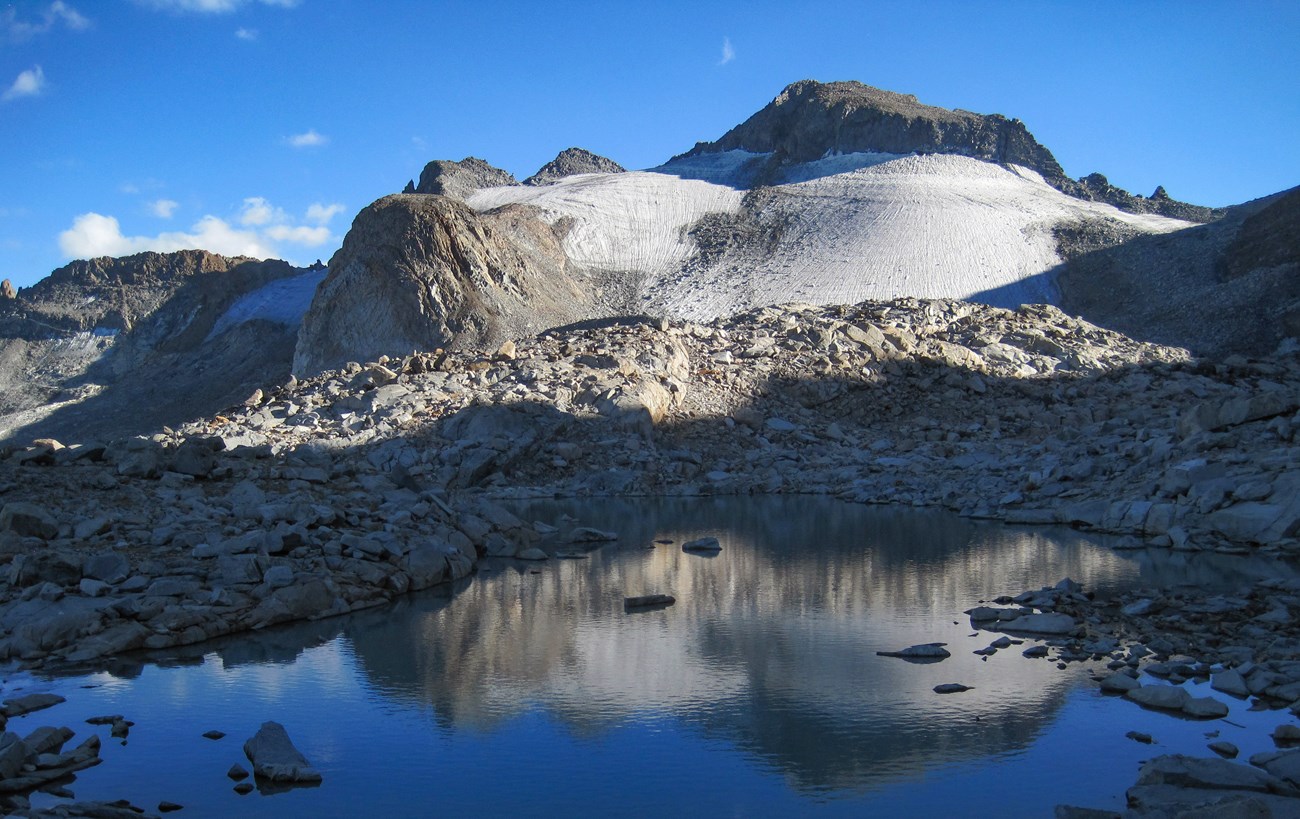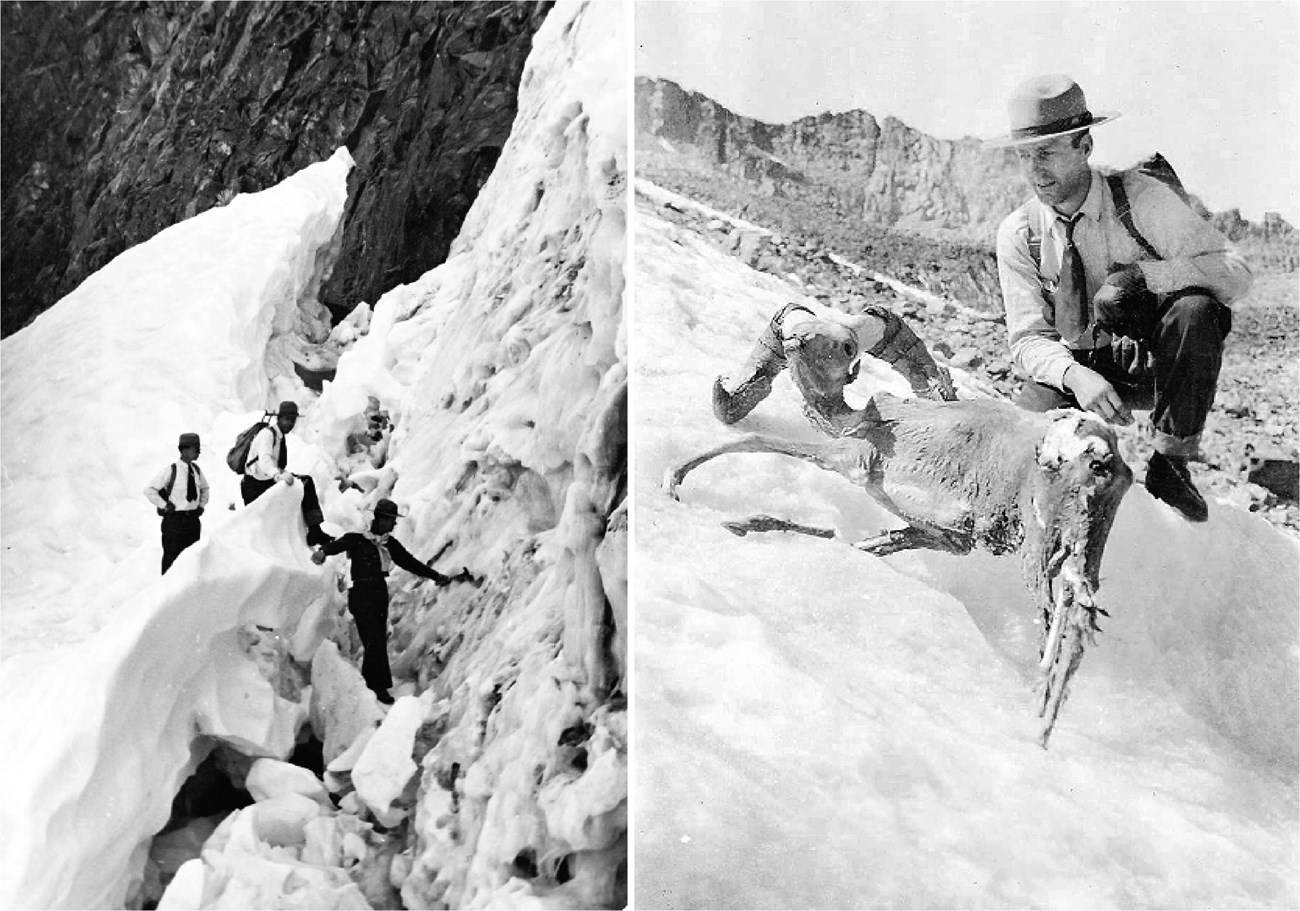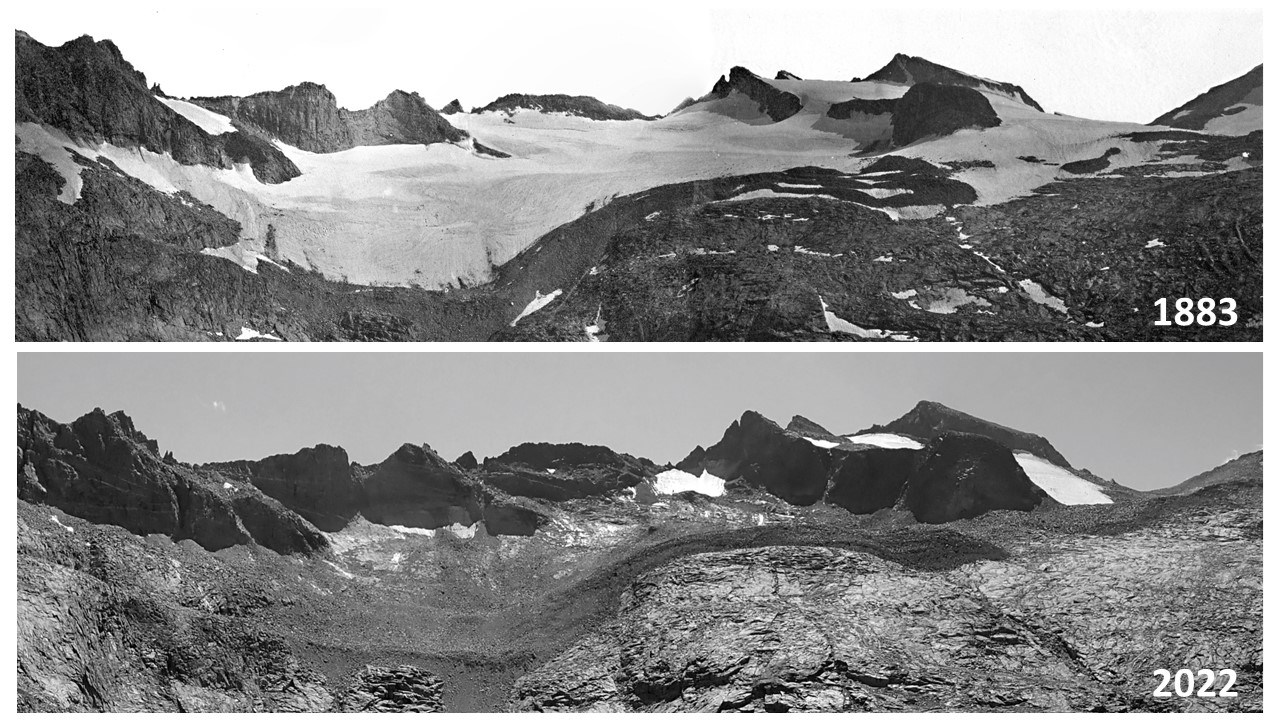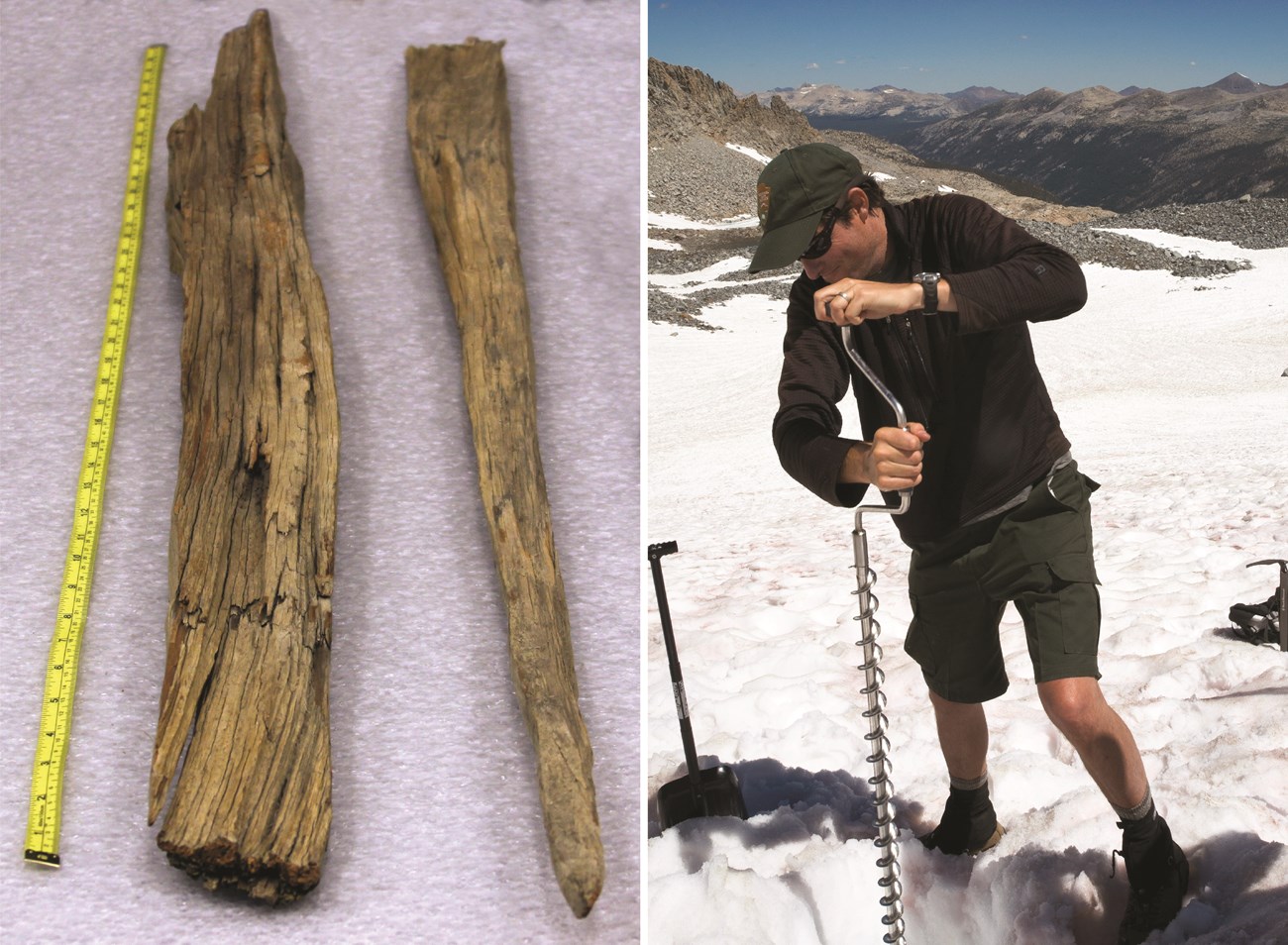
Ice Age glaciers played an essential role in shaping Yosemite’s landscape. Most of this ice had melted away due to natural warming by about 10,000 years ago. During a more recent cold period called the Little Ice Age, small glaciers formed below the highest peaks. Currently, two remain: the Lyell and Maclure glaciers. These ice bodies are important to local ecosystems because they provide a year-round supply of cold water to the Lyell Fork of the Tuolumne River, especially during the late summer and fall after the winter snowpack has melted. 
(Right) The Lyell and Maclure glaciers sit at the headwaters of the Tuolumne River and are an important source of water for alpine ecosystems (and hikers). Glacier Research in Yosemite

(Right) In 1933, park rangers discovered a mummified bighorn sheep melting out of the Lyell Glacier. By that time, bighorn sheep had been locally extirpated from Yosemite, primarily by disease transmission from domestic sheep. In March of 2015, bighorn sheep were reintroduced to the Mount Lyell area. Integrating this history of research allows park scientists to compile maps of the ice extent through time. Glaciers are sensitive indicators of climatic changes because their health depends on winter precipitation and summer temperatures. Both the Lyell and Maclure glaciers have been steadily retreating since they were first mapped and photographed in 1883, but melting has accelerated rapidly in the past decade, especially during the drought that began in 2012. Repeat photography shows the glaciers melting back as well as thinning through time. Although glaciers have come and gone from Yosemite many times in the past, scientists agree that the current melting is primarily due to warmer temperatures caused by human activities. 
USGS photo by Israel C. Russell (top)
Visit our keyboard shortcuts docs for details
This animation shows the retreat of the Maclure and Lyell glaciers from 1883 to 2016. Note: There is no audio. Glaciers move when they are thick enough to flow under their own weight, and as water underneath them reduces friction allowing them to slide. In 2012, with a grant from Yosemite Conservancy, scientists repeated an experiment that John Muir performed in 1872, which measured the movement of the Maclure Glacier using stakes placed in the ice. They discovered that Maclure Glacier was flowing at a rate of about one inch per day (2.5 cm) — the exact same rate that Muir measured 140 years earlier. This was surprising because the glacier was less than half the size that it was in Muir's time. Scientists concluded that the Maclure Glacier continues to move mainly because its own meltwater is helping it slide. In contrast, the Lyell Glacier had not moved at all, probably because it is too thin. In 2022, scientists reproduced the experiment again - 150 years ago to the exact day. They found that the Maclure Glacier is still moving but is slowing down, now at a rate of three-quarters of an inch (1.9 cm) per day. The Lyell Glacier remains stagnant. Glaciers by definition move, so the term "glacier" may no longer properly apply to the Lyell ice body. 
(Right) Park ranger installing a stake to measure movement of the Maclure Glacier. In 2012, park scientists found that the glacier was moving at the same rate as Muir measured in 1872—about an inch per day. Ten years later they found that the glacier was moving slower, at about three-quarters of an inch per day. Depending on whether drought conditions return in the coming years, the Lyell Glacier could disappear within a decade or so. The Maclure Glacier is expected to remain longer, but will ultimately follow suit. When that happens, Yosemite's glaciers will become part of its past, marking the end of a rich history of glacier research.
|
Last updated: March 21, 2023
